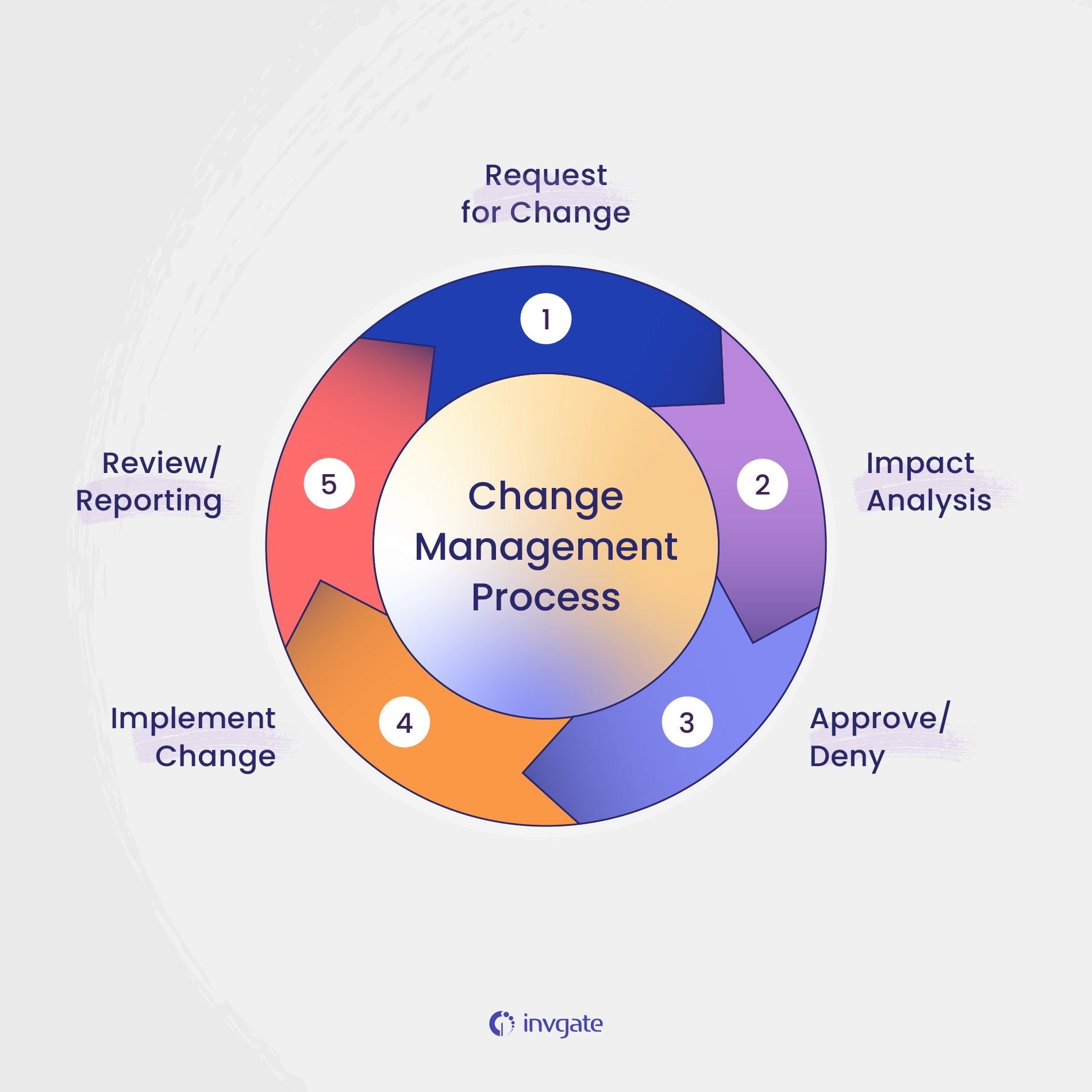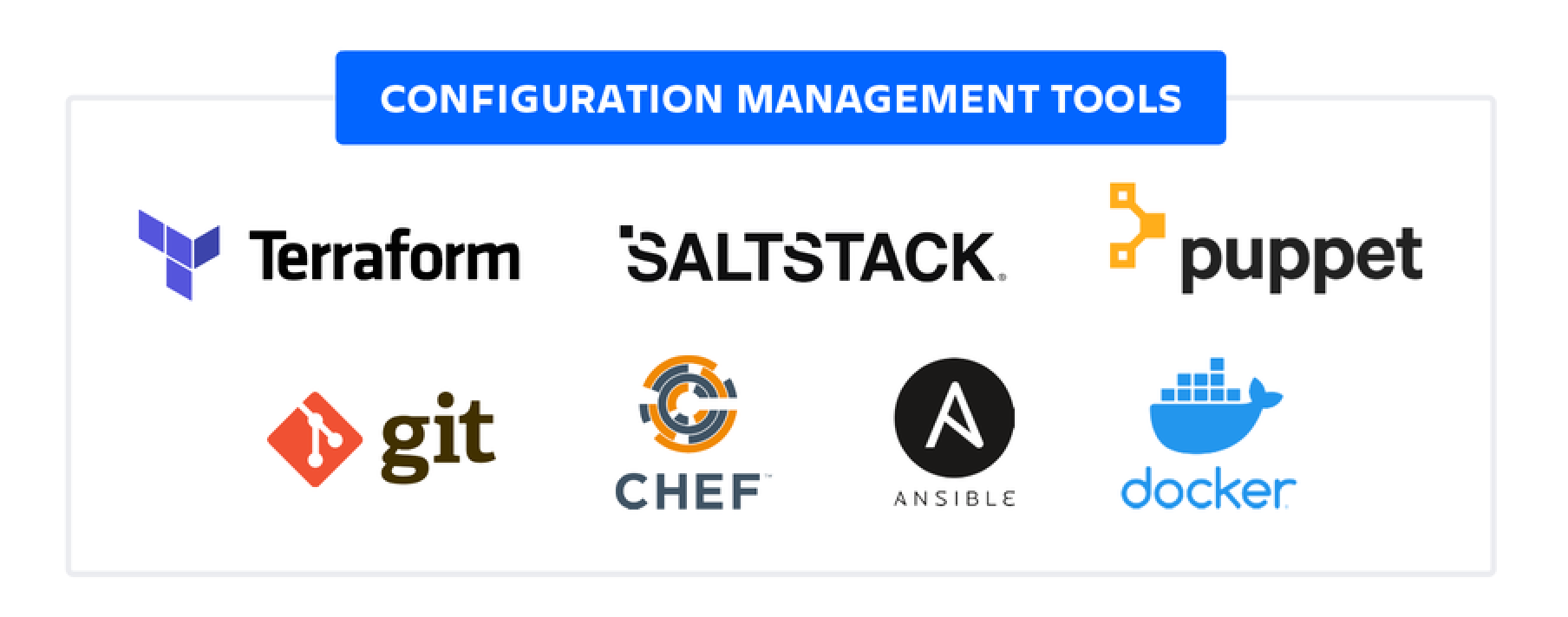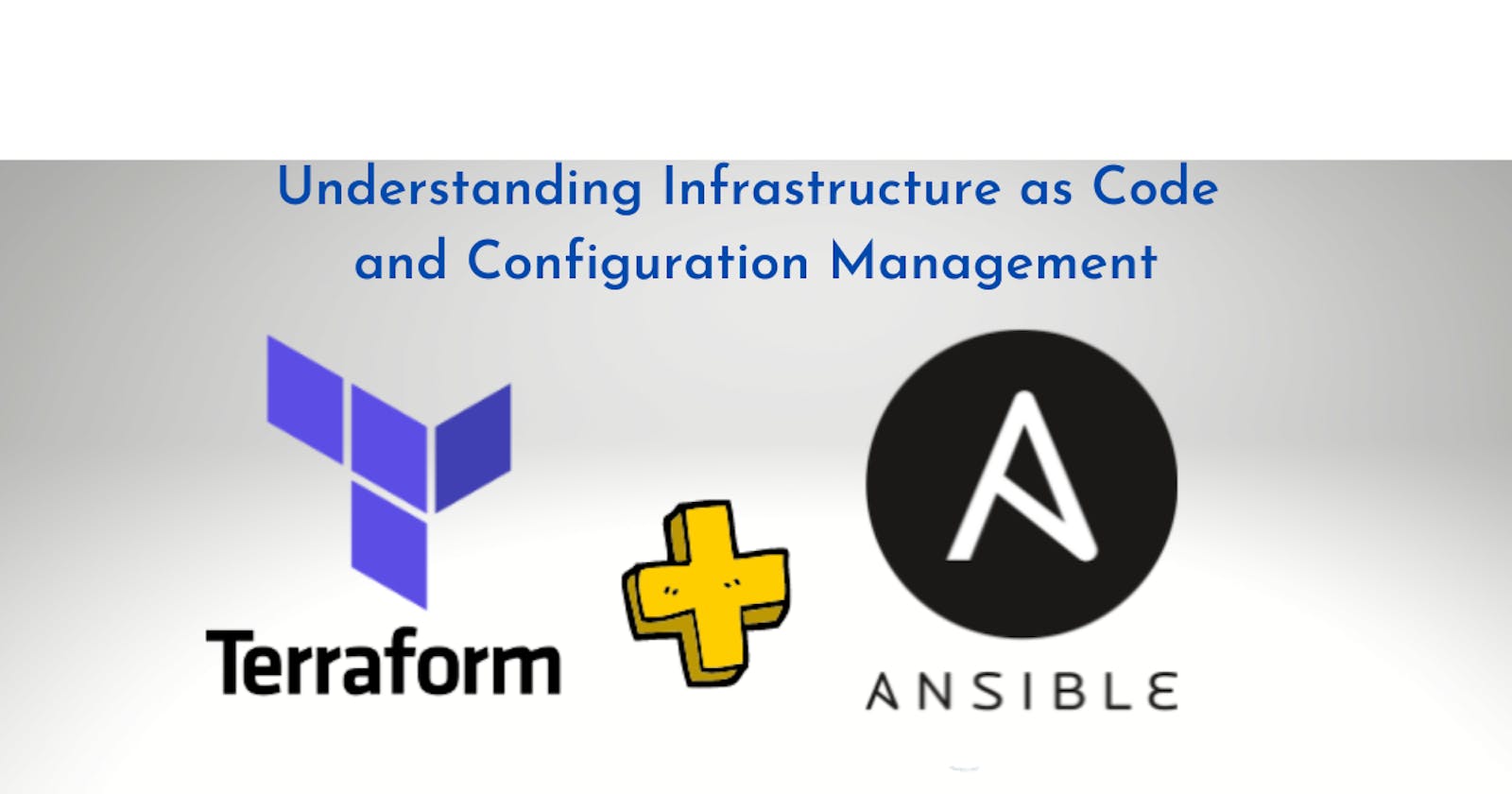Understanding Infrastructure as Code and Configuration Management
#90 Days of DevOps Challenge - Day 54
Table of contents
When it comes to the cloud, Infrastructure as Code (IaC) and Configuration Management (CM) are inseparable. With IaC, a descriptive model is used for infrastructure management. To name a few examples of infrastructure: networks, virtual computers, and load balancers. Using an IaC model always results in the same setting.
Throughout the lifecycle of a product, Configuration Management (CM) ensures that the performance, functional and physical inputs, requirements, design, and operations of that product remain consistent.
Define Infrastructure as Code
Infrastructure as Code (IaC) is an approach to managing and provisioning infrastructure resources in a software-defined and automated manner. It involves using machine-readable files to define and configure infrastructure components, such as servers, networks, storage, and other resources, instead of manually configuring them through traditional methods.
With Infrastructure as Code, the infrastructure configuration is treated as code, allowing developers and operations teams to manage infrastructure resources using the same practices and tools they use for application code. The infrastructure configuration files, often written in declarative or imperative languages, describe the desired state of the infrastructure and the relationships between different components.
Key Characteristics and benefits of Infrastructure as Code
Version Control: Infrastructure configuration files can be version controlled using tools like Git, enabling tracking of changes, collaboration, and rollback to previous versions if needed. This provides a history of infrastructure changes and helps in maintaining consistency and reproducibility.
Automation: Infrastructure provisioning and management tasks can be automated using tools and frameworks such as Terraform, AWS CloudFormation, or Ansible. These tools allow for the provisioning, modification, and deletion of infrastructure resources through code, reducing manual effort, minimizing errors, and ensuring consistency across environments.
Scalability and Reproducibility: Infrastructure as Code enables easy scaling of infrastructure resources by simply adjusting the configuration files. It also allows for the creation of multiple environments, such as development, staging, and production, with consistent and reproducible infrastructure setups.
Infrastructure Testing: Infrastructure configuration files can be tested using automated testing frameworks. This helps in verifying the correctness and reliability of the infrastructure code, ensuring that it meets the desired state and works as expected.
Collaboration and Standardization: Infrastructure as Code promotes collaboration between development and operations teams, as both can work together on defining and maintaining the infrastructure code. It also encourages standardization and best practices in infrastructure configurations across the organization.
Disaster Recovery and High Availability: With Infrastructure as Code, disaster recovery and high availability setups can be defined and automated. Infrastructure resources can be easily replicated, and failover mechanisms can be implemented by modifying the configuration files.
Overall, Infrastructure as Code brings the principles and practices of software development to infrastructure management, enabling the automation, consistency, scalability, and reproducibility of infrastructure resources. It aligns with the DevOps philosophy by promoting collaboration, automation, and agility in managing the infrastructure lifecycle.

Common IaC Tool
%20(1).png)
There are several popular Infrastructure as Code (IaC) tools available that facilitate the provisioning, configuration, and management of infrastructure resources. Here are some commonly used IaC tools:
Terraform:-Terraform is an open-source tool by HashiCorp that allows you to define and provision infrastructure resources across multiple cloud providers, including AWS, Azure, Google Cloud, and more. It uses declarative language to describe infrastructure configurations and supports a wide range of resource types.
AWS CloudFormation:- AWS CloudFormation is a native infrastructure provisioning service provided by Amazon Web Services (AWS). It allows you to create and manage AWS resources using JSON or YAML templates. CloudFormation is tightly integrated with AWS services and provides features like stack updates and drift detection.
Ansible:-Ansible is an open-source automation tool that can be used for infrastructure provisioning, configuration management, and application deployment. It uses YAML-based configuration files called "playbooks" to define tasks and manage infrastructure resources. Ansible supports a wide range of platforms, including both cloud and on-premises environments.
Puppet:- Puppet is a configuration management tool that allows for the automated provisioning, configuration, and management of infrastructure resources. It uses a declarative language to define the desired state of the infrastructure. Puppet provides a centralized management system and supports both Linux and Windows environments.
Chef:- Chef is another popular configuration management tool that follows the Infrastructure as Code approach. It uses a domain-specific language (DSL) called "recipes" to define the desired infrastructure state. Chef supports both Windows and Linux environments and offers a robust ecosystem of pre-built configuration modules.
SaltStack:-SaltStack is an open-source configuration management and orchestration tool. It uses a YAML-based configuration language to define infrastructure configurations and supports managing large-scale infrastructures. SaltStack provides remote execution capabilities and can be used for both configuration management and orchestration tasks.
These are just a few examples of IaC tools available in the market. The choice of tool depends on your specific requirements, the cloud provider you are using, and your team's familiarity with the tool. It's important to evaluate the features, capabilities, and community support of each tool to determine the best fit for your infrastructure automation needs.
Define Configuration Management
Configuration Management is the practice of systematically managing and maintaining the configuration of software systems and infrastructure components throughout their lifecycle. It involves the process of identifying, tracking, and controlling the various configuration items (CIs) that make up a system, ensuring consistency, reliability, and traceability.
Key Characteristics and Benefits of using Configuration Management
Configuration Management offers several key characteristics and benefits that contribute to efficient and reliable management of software systems and infrastructure. Here are some of the key characteristics and benefits of using Configuration Management:
Consistency and Standardization:- Configuration Management ensures that all software systems and infrastructure components are configured consistently and follow standardized configurations. This minimizes configuration drift and reduces the risk of misconfigurations, leading to improved system stability and reliability.
Traceability and Accountability:- Configuration Management provides traceability by capturing and documenting the changes made to the configuration items. It enables organizations to track who made the changes, when they were made, and why they were made. This helps in troubleshooting, auditing, and maintaining accountability for configuration changes.
Change Control and Compliance:- Configuration Management establishes change control processes, ensuring that all configuration changes are properly planned, reviewed, approved, and implemented. It helps organizations comply with regulatory requirements and industry standards by enforcing proper change management procedures.
Efficient Troubleshooting and Maintenance:- With Configuration Management, organizations can quickly identify the configuration items that are part of a system and their relationships. This allows for efficient troubleshooting and maintenance, as any issues or errors can be traced back to specific configuration items and their respective configurations.
Reproducibility and Disaster Recovery:- Configuration Management enables the ability to reproduce and recreate the exact configuration of a system at any point in time. This is particularly useful for disaster recovery scenarios, where the configuration can be restored to a known working state. It reduces downtime and facilitates efficient recovery from system failures.
Scalability and Flexibility:- Configuration Management provides the foundation for scalable and flexible infrastructure. By managing infrastructure configurations through automation tools, organizations can easily scale their systems, provision new resources, and adapt to changing business needs.
Collaboration and Team Efficiency:-Configuration Management encourages collaboration and coordination among development, operations, and other teams involved in managing the system. It establishes a common understanding of the system's configuration and enables teams to work together efficiently, reducing errors and miscommunication.
Version Control and Auditing:- Configuration Management tools often include version control capabilities, allowing organizations to track changes made to configuration items over time. This facilitates auditing, rollbacks, and comparisons between different versions of configurations, ensuring proper governance and control.
Overall, Configuration Management provides a systematic approach to managing software systems and infrastructure configurations. It enhances system stability, improves efficiency, ensures compliance, and facilitates effective troubleshooting and maintenance. By implementing Configuration Management practices, organizations can reduce risks, enhance productivity, and achieve more reliable and scalable operations.

Common Configuration Management Tool

There are several popular Configuration Management tools available that help organizations automate and manage their software systems and infrastructure configurations. Here are some commonly used Configuration Management tools:
Ansible:- Ansible is an open-source automation tool that provides a simple and agentless approach to Configuration Management. It uses a YAML-based configuration language and SSH protocol to execute tasks on remote systems. Ansible is known for its ease of use, scalability, and support for a wide range of platforms.
Puppet:- Puppet is a widely adopted Configuration Management tool that offers a declarative language to define and manage system configurations. It provides a centralized management system, allowing organizations to define configurations for multiple systems and enforce consistency. Puppet supports various operating systems and has an extensive library of pre-built configurations called "modules."
Chef:- Chef is another popular Configuration Management tool that follows a "Infrastructure as Code" approach. It uses a Ruby-based language called "recipes" to define system configurations. Chef offers a flexible and scalable solution for managing infrastructure and automating tasks across multiple platforms.
SaltStack:- SaltStack, also known as Salt, is an open-source Configuration Management and remote execution tool. It uses a simple and efficient communication protocol for executing commands and managing configurations on remote systems. SaltStack provides a high degree of scalability and performance, making it suitable for managing large-scale infrastructure.
Terraform:-While primarily known as an Infrastructure as Code tool, Terraform also offers configuration management capabilities. It allows organizations to define and manage infrastructure configurations using a declarative language. Terraform supports multiple cloud providers and can manage a wide range of resources, including virtual machines, containers, networks, and more.
Microsoft PowerShell DSC:- PowerShell Desired State Configuration (DSC) is a Configuration Management platform offered by Microsoft. It uses PowerShell scripts to define and enforce system configurations on Windows machines. PowerShell DSC is well-integrated with the Windows ecosystem and offers extensive support for managing Windows-specific configurations.
These are just a few examples of Configuration Management tools available in the market. The choice of tool depends on various factors such as the organization's requirements, platform support, ease of use, scalability, and community support. It's important to evaluate the features and capabilities of each tool to determine the best fit for your Configuration Management needs.
Difference Between IaC & Configuration Management
| Infrastructure as Code (IaC) | Configuration Management | |
| Definition | IaC is an approach or practice of provisioning and managing infrastructure resources using machine-readable configuration files or scripts. It treats infrastructure resources (such as virtual machines, networks, storage) as code, allowing for automated provisioning, configuration, and management. | Configuration Management is a practice of systematically managing and maintaining the configuration of software systems and infrastructure components throughout their lifecycle. It involves processes, tools, and techniques to track, control, and manage configurations. |
| Purpose | IaC aims to automate the process of infrastructure provisioning and management, providing the ability to define, version, and reproduce infrastructure configurations consistently. It helps in achieving consistent and repeatable deployments, reducing manual errors and improving scalability. | Configuration Management aims to ensure consistency, reliability, and traceability of system configurations. It involves managing software versions, configurations, dependencies, and their relationships. Configuration Management ensures that systems are correctly configured, changes are controlled, and configurations can be reproduced or rolled back. |
| Scope | IaC typically focuses on the provisioning and configuration of infrastructure resources and their dependencies. It includes defining the infrastructure topology, specifying resource configurations, and managing infrastructure state. | Configuration Management covers the management of software configurations, including applications, middleware, databases, and related components. It includes version control, release management, change control, and auditing of configurations. |
| Tools | Common IaC tools include Terraform, AWS CloudFormation, Azure Resource Manager, Google Cloud Deployment Manager, and others. These tools provide a declarative or imperative way to define and manage infrastructure resources. | Popular Configuration Management tools include Ansible, Puppet, Chef, SaltStack, and Microsoft PowerShell DSC. These tools provide capabilities to define and manage software configurations, enforce desired states, and automate configuration tasks. |
| Benefits | IaC enables infrastructure agility, faster deployments, version control, infrastructure as versioned artifacts, scalability, and better collaboration between development and operations teams. | Configuration Management provides consistency, traceability, change control, compliance, efficient troubleshooting, and maintenance. It helps in managing complex systems, enforcing standards, minimizing errors, and supporting reliable and scalable operations. |
Thank you for reading!! I hope you find this article helpful!!
if any queries or corrections to be done to this blog please let me know.
Happy Learning!!
Saikat Mukherjee

